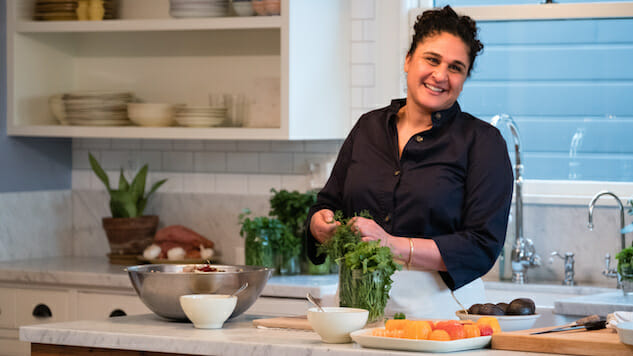Netflix’s Disappointing Salt Fat Acid Heat Needs More Seasoning
Photo: Adam Rose/Netflix
Samin Nosrat probably doesn’t remember meeting me, but I remember meeting her. She was the main speaker at a fundraiser for a creative writing program, and the truth is, I was a little itchy about it. She seemed nice. She was gracious. I was sure, given her credentials (Chez Panisse doesn’t export a lot of slouches), that she was a very good chef. What she wasn’t, and it stood out prominently given the venue, was significantly creative. At least, not with words. Not everyone is! And not everyone needs to be. It’s just that when you’re speaking to a room full of writers about writing, and how cooking relates to the craft of poetry or storytelling (and it does), it helps if you have a little poetry in you. Nosrat firmly convinced me not to buy her book that night.
That book, Salt Fat Acid Heat, has now been made into a four-part Netflix series, proving that just because Alex Gibney executive produces something does not mean a vital new voice is finally being heard. I sincerely dislike slamming anyone who’s successfully mastered a skill, and like I said, I have no doubt Nosrat’s great in the kitchen. But this show, like the book it’s based on and despite torrents of salt, lemon juice and pork fat, manages to be oddly unseasoned.
It is, I think, intended to be the “instructional” type of cooking show pioneered by people like Julia Child and Jacques Pepin: “You, too, can make a soufflé. Here’s how!” But you never see a recipe assembled end-to-end. Apparently, these days, no one can avoid the travel trope and simply do a cooking show, so we get to go to Very Iconic Destinations for each element. Salt? They make roughly 97,000 totally unique kinds in Japan. Fat? Welcome to the rolling hills of Liguria and Emilia-Romagna, where olives and heirloom pigs and ancient extra-special cattle run the show. Local experts are inserted with no particular context (someone really good at making sofrito is making softrito, but I’d have to Google it to tell you who she is, and I’m not even the total food-novice the show purportedly seeks to persuade).
Individual moments are beautifully shot, or instructive, or both. The “Fat” segment has some legitimately amazing footage of a norcino, a super old school pork butcher, breaking down a pig for salumi. “Heat” actually hits the mark reasonably well on teaching stuff you’ll take with you at the end of the hour. But overall? This is a clearly nice woman and a genuine enthusiast (and doubtless a very accomplished chef) who is essentially devoid of poetry—and without a little of that, a chef’s never going to truly stick the landing, no matter how well-versed they are in the ways of butter or lime juice.
-

-

-

-

-

-

-

-

-

-

-

-

-

-

-

-

-

-

-

-

-

-

-

-

-

-

-

-

-

-

-

-

-

-

-

-

-

-

-

-








































